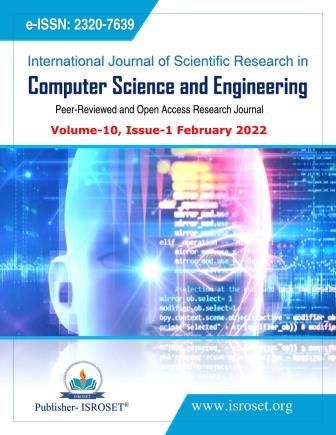Design and Development of a Dynamic Hashing Algorithm
Keywords:
Hash, Hashing Algorithm, Bit Mixing, Shift in Row, Shift in Column, Data Integrity, SHA – 512, MD5Abstract
The world is in front of a huge digital revolution. Pragmatically 59% people of the world population are now using the internet for their daily activities related to business, medical, industries, education. It’s a very big challenge to maintain the integrity of the shared data. Those issues can be solved by using a cryptographic technique called hashing. This paper demonstrates a new smooth cryptographic hashing algorithm based on Merkle–Damgård construction structure and Matyas-Meyer-Oseas compression function which generates hashes through 16 rounds where each block contains 256 bits of data. These blocks of data are processed through some existing and newly developed methods like bit scheduler, switching box, shift in column, shift in row, and bit mixing. This proposed algorithm works block-wise and can generate same level of hashes as SHA-512 and MD5. But it uses less time and resources than SHA-512 and MD5 for processing alphabet and numeric data.
References
Marc Stevens, Elie Bursztein, Pierre Karpman, “The ?rst collision for full SHA-1”, Annual International Cryptology Conference, 2017
Yuliang Zheng, Josef Pieprzyk, Jennifer Seberry, “HAVAL — A one-way hashing algorithm with variable length of output”, Advances in Cryptology — AUSCRYPT `92, 1993, Volume 718, ISBN : 978-3-540-57220-6
Kwok HS, Tang WKS, “A chaos-based cryptographic Hash function for message authentication.”, Int J Bifurcat Chaos 2005; 15:4043–50
Jean-S´ebastien Coron, Yevgeniy Dodis, C´ecile Malinaud, and Prashant Puniya, “Merkle-Damg?ard Revisited : how to Construct a Hash Function”, 2015
Downloads
Published
How to Cite
Issue
Section
License

This work is licensed under a Creative Commons Attribution 4.0 International License.
Authors contributing to this journal agree to publish their articles under the Creative Commons Attribution 4.0 International License, allowing third parties to share their work (copy, distribute, transmit) and to adapt it, under the condition that the authors are given credit and that in the event of reuse or distribution, the terms of this license are made clear.







